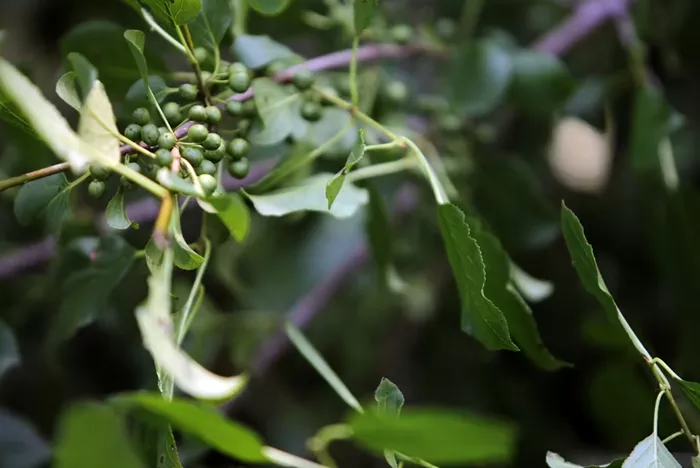As the days grow shorter in late fall, the invasive buckthorn plant presents a unique vulnerability, according to recent research from the University of Minnesota. With strategic planning, certain native plants can effectively combat buckthorn, potentially aiding in its eradication from Minnesota’s forests.
Buckthorn, which was introduced from Europe in the mid-1800s as an ornamental hedge, has become one of Minnesota’s most aggressive invasive species. Its dense, hardy leaves remain late into the fall, making it resilient against damage and unappealing to wildlife. This adaptability allows buckthorn to outcompete most native plants for sunlight, creating a “green desert” that stifles biodiversity, as noted by Mike Schuster, a researcher with the university’s Department of Forest Resources.
The rapid growth of buckthorn contributes to damaging cycles in the ecosystem. It provides a hospitable environment for invasive earthworms, which further harm native plants, thereby reducing competition for buckthorn. Since the 1990s, Minnesota’s foresters, park managers, and municipalities have invested millions in attempts to control its spread. Despite various methods, including chainsaws, herbicides, and even hired goats, buckthorn often regrows within a few years.
A common belief has emerged that buckthorn seeds can lie dormant in the soil for up to six years. This notion has fostered a sense of hopelessness regarding eradication efforts. However, Schuster explains that buckthorn seeds typically survive only one to two years, which could change the approach to managing this invasive species.
Buckthorn’s primary advantage in Minnesota’s forests is its late-fall leaf retention. When the plant’s mature stems are cut, new sprouts emerge and focus their energy on maintaining these leaves, gathering vital resources for growth. Schuster highlights this timing as an opportunity to combat the invasive plant.
In a state-funded research project, the university has examined buckthorn infestations across Minnesota. Their findings, published in journals like Biological Invasions, reveal that after cutting down buckthorn hedges, introducing seeds of specific native plants can prevent regrowth. These native plants can shade out the young buckthorn in its critical early growth phase.
Virginia wildrye, a native grass, has emerged as a particularly effective choice. It grows quickly and densely, offering a competitive advantage against buckthorn. “It’s a race against time,” Schuster emphasizes, noting that establishing a thick layer of grasses can limit buckthorn’s access to light when it needs it most.
However, growing grasses requires sufficient sunlight, so they thrive best in areas with thinner forest canopies. In denser woods, shade-tolerant wildflowers like large-leaved aster and white snakeroot, along with native shrubs such as elderberry, can also be beneficial. While these options may be more expensive and slower to establish than grasses, they contribute to the overall strategy.
Although native plants alone cannot eliminate established buckthorn, they play a crucial role in preventing its return when planted alongside initial removal efforts. Schuster asserts that when planted strategically, these native grasses and shrubs can significantly inhibit buckthorn’s resurgence in Minnesota’s forests.
Related topics:
- South Australian Tomato Farms to Stay in Quarantine for Months
- Kikwetu Flowers: More Than Premium Roses—A Commitment to Sustainability and Social Welfare
- Diwali 2024: Inspiring Ideas to Transform Leftover Puja Flowers into Beautiful Creations


